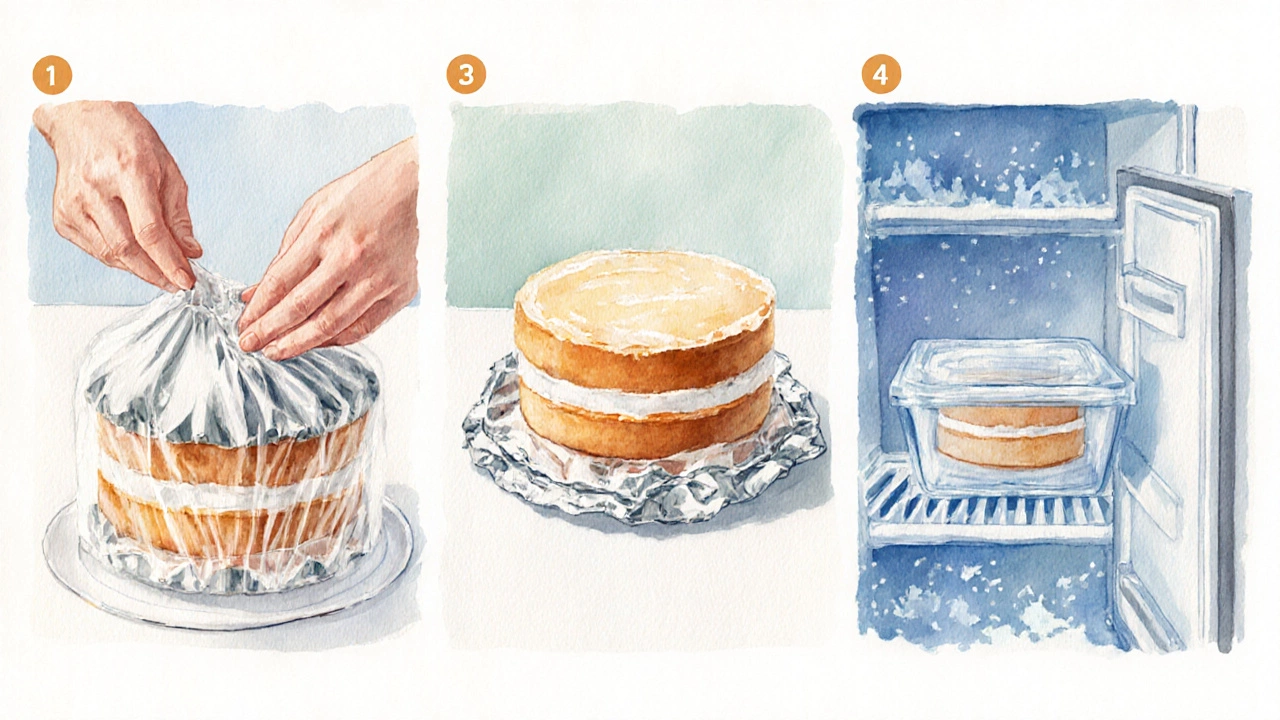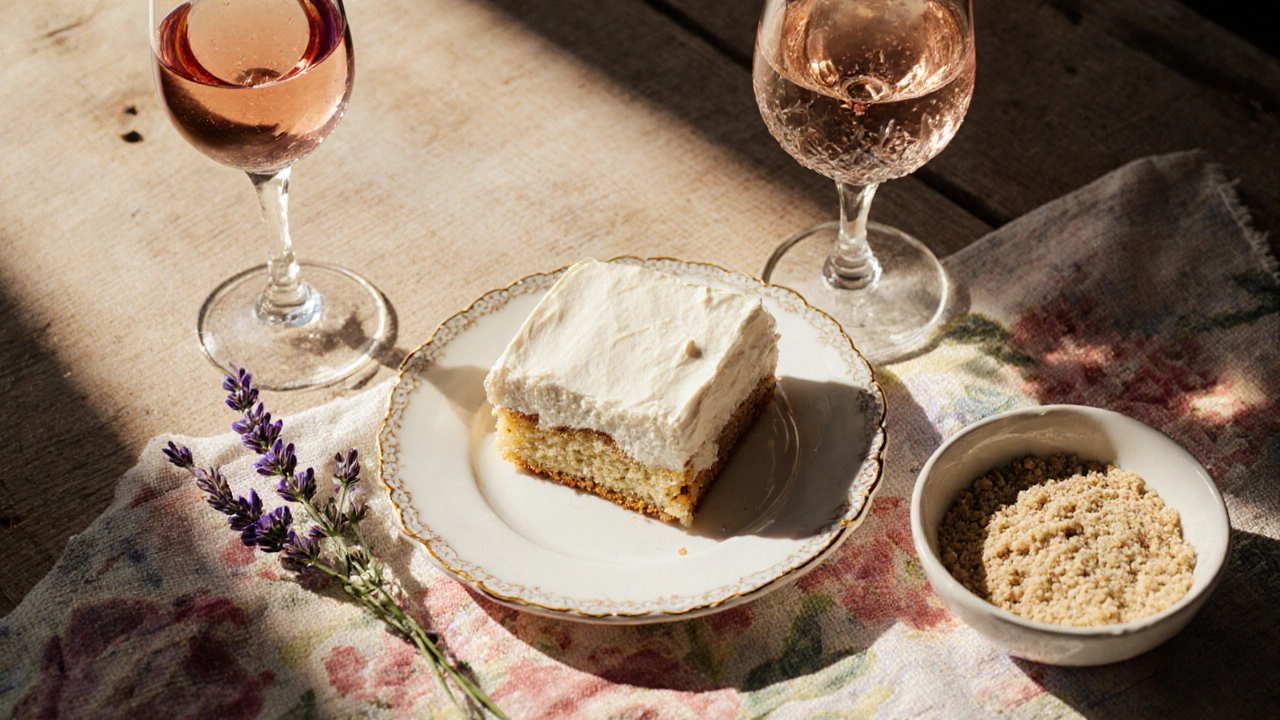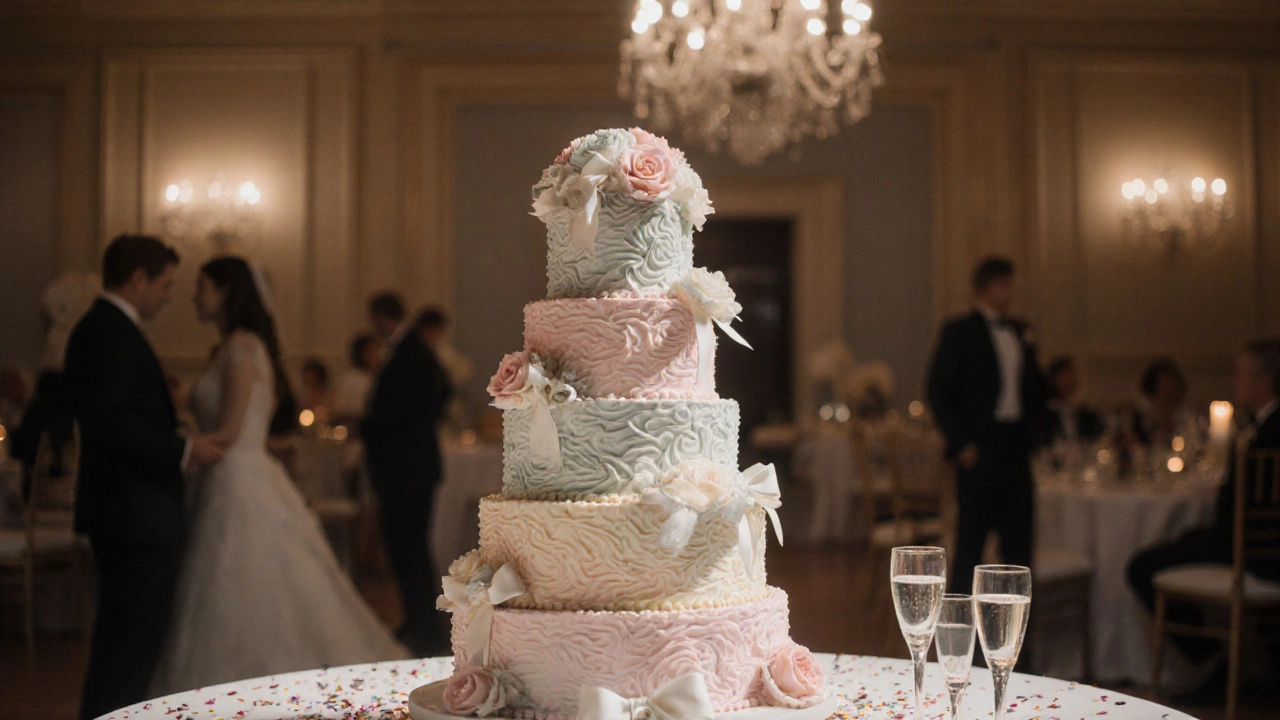Wedding Cake Preservation Calculator
Determine if your cake can be safely preserved for a year
Based on your cake type and filling. This tool follows food safety guidelines from the article.
Cake Information
Preservation Results
Preservation Status:
When the last slice of frosting disappears and the music fades, many couples wonder what to do with the towering Wedding Cake is a centerpiece that represents a day full of memories and sweet promises. Some friends say you should keep it for a year, cut a piece on your first anniversary, and actually eat it. Others call it a waste of delicious cake. So, is there a real tradition behind eating your cake a year later, and can you do it safely? Let’s break down the myths, the science, and the best ways to preserve that cake without compromising flavor.
Key Takeaways
- Most wedding cakes can be safely stored for up to 12 months if frozen properly.
- Freezing preserves texture and flavor better than refrigerating or leaving at room temperature.
- Use an airtight container, wrap each layer in plastic, and label with the freeze date.
- Thaw slowly in the fridge and let it sit at room temperature before serving.
- If you’re unsure about food safety, consider recreating the cake using saved decorations instead.
Where Did the "Eat Your Cake After a Year" Tradition Come From?
The idea of saving a slice for the first anniversary started in the Victorian era when Anniversary Cake was a symbolic gesture of lasting love. Couples would keep a tiny portion, often wrapped in wax paper, and share it on the 12‑month mark. In Europe, the practice grew into a whole cake‑preservation ritual, especially in regions where bakers used dense fruit‑cake recipes that aged well.
In modern weddings, lighter buttercream or fondant cakes dominate, which don’t naturally improve with age. Yet the sentiment sticks-saving a piece feels like a tangible reminder of the vows. Knowing the science behind cake spoilage helps you decide whether to honor the tradition or choose another keepsake.
How Long Can You Actually Keep a Wedding Cake?
That depends on three factors: frosting type, filling, and storage method. Here’s a quick snapshot:
- Buttercream & Ganache: Best kept frozen; will stay fresh for 9‑12 months.
- Fondant: Holds up well in the freezer, but can become hard if not wrapped properly.
- Fresh fruit or mousse layers: Should be consumed within 2‑3 weeks, even when frozen, because dairy can break down.
If you plan to eat the cake a year later, the safest bet is a fully frozen, well‑wrapped cake with buttercream or fondant. Anything with fresh fruit should be avoided for such a long storage period.

Best Ways to Preserve Your Wedding Cake
Below is a comparison of the most common storage techniques. wedding cake preservation is the keyword most people search for, and the table shows why freezing tops the list.
| Method | Shelf Life | Texture Change | Flavor Retention | Ease of Use |
|---|---|---|---|---|
| Freeze | 9‑12 months | Very little if wrapped well | High | Medium - needs wrapping & labeling |
| Refrigerate | 1‑2 weeks | Can become dry | Moderate | Easy |
| Room‑temp (air‑tight container) | 3‑5 days | Dry crust forms | Low | Very easy |
| Dry & store (for fruit‑cakes) | Months to years | Hardens, but intended | Improves with age | Needs special recipes |
Freezing wins for most modern cakes because it halts microbial growth and locks in moisture. The key is to prevent freezer burn and keep the frosting from absorbing odors.
Step‑by‑Step Guide to Freezing Your Wedding Cake
- Trim and level: If the cake has a sturdy base, remove any decorative sugar paste that could crack. Use a Cake Cutting Knife to level each tier.
- Wrap tightly: Wrap each layer in a double layer of cling film, then a layer of aluminum foil. This double barrier stops freezer burn and protects frosting.
- Box it up: Place the wrapped layers in an Airtight Container that fits the tier size. If the container is too large, add extra foil padding.
- Label clearly: Write the freeze date and cake flavor on a piece of masking tape. This helps you rotate stock if you have multiple cakes.
- Freeze quickly: Put the container in the coldest part of the freezer (usually the back). A rapid freeze creates smaller ice crystals, preserving smoothness.
- Store for up to 12 months: Avoid opening the freezer frequently; each temperature swing can affect texture.
When the anniversary arrives, follow the thawing steps below to keep the cake safe and tasty.
How to Safely Eat Your Cake After a Year
- Move to the fridge: Transfer the frozen cake (still wrapped) to the refrigerator 24 hours before you plan to serve. This slow thaw keeps condensation off the frosting.
- Unwrap and rest: Remove the foil and cling film, then let the cake sit at room temperature for about an hour. This allows the buttercream to soften naturally.
- Check for off‑smells: If the cake smells sour or metallic, discard it. Proper freezing should eliminate most bacterial growth, but errors happen.
- Serve a small slice first: Taste a tiny piece to gauge texture. If it feels grainy or the frosting is crumbly, consider using the cake for a trifle instead of a full slice.
If the cake passes all checks, enjoy it alongside your favorite wine or tea. Many couples say the flavor even deepens after a year, especially if the frosting contains vanilla or almond extract.

Alternatives If You’re Not Ready to Eat the Same Cake
Preserving a cake isn’t just about eating it later; it can serve as a nostalgic element for other desserts:
- Re‑create decorations: Keep the fondant bows, fresh flowers, and custom toppers to use on a new anniversary cake.
- Make cake crumbs: Pulse frozen pieces in a food processor and use them for cheesecake bases or topping ice cream.
- Turn it into a trifle: Layer cake cubes with whipped cream and fruit for a quick, elegant dessert.
These options let you honor the tradition without risking a stale bite.
Common Pitfalls and How to Avoid Them
Even seasoned bakers stumble when preserving cakes. Here are the top three mistakes and the fix:
- Skipping the double wrap: One layer of plastic lets freezer air in, causing freezer burn. Always double‑wrap and add foil.
- Storing with strong‑smelling foods: Buttercream absorbs odors like garlic or fish. Keep your cake in a separate freezer compartment.
- Thawing at room temperature: Rapid thaw creates condensation that makes frosting soggy. Use the fridge method described above.
Following these tips ensures your cake looks as pretty on day 365 as it did on day 1.
Frequently Asked Questions
Can I keep a fresh‑fruit‑filled wedding cake for a year?
No. Fresh fruit or mousse layers contain dairy that breaks down quickly, even when frozen. Stick to buttercream or fondant cakes for long‑term storage.
Do I need a special freezer for wedding cakes?
A regular home freezer works fine as long as you keep the temperature at -18 °C (0 °F) and avoid opening it too often.
How long should I let the cake sit after thawing?
Let it rest at room temperature for 30‑60 minutes. This gives the frosting time to soften evenly.
Is it safe to eat a cake that’s been frozen for 12 months?
Yes, if it was wrapped properly, kept at a constant -18 °C, and shows no off‑odors after thawing. When in doubt, taste a tiny piece first.
Can I reuse the wedding cake topper after freezing?
Absolutely. Most toppers are plastic or wood and aren’t affected by the cold. Just keep them dry and store them separately.

